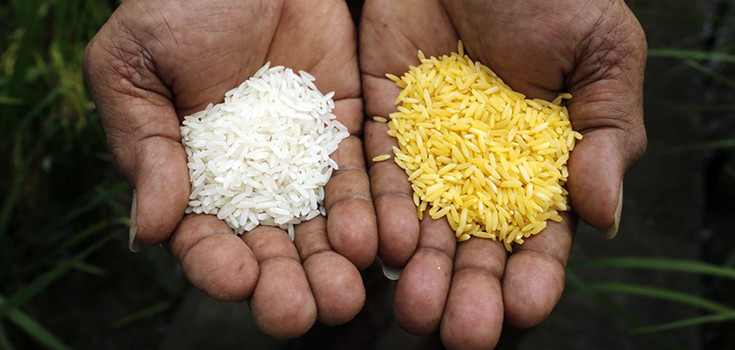……………………………………………………………………………….

According to the Golden Rice Project, vitamin A deficiency is prevalent among the poor whose diets are primarily composed of rice and other carbohydrate-rich foods containing too few micronutrients. The situation is especially dire in Southeast Asia and Africa. About 250 million preschool children are affected by vitamin A deficiency (VAD). The group says that providing children with vitamin A could prevent about a third of all under-5 deaths.
Enter, Golden Rice.
The Golden Rice Project writes on its website:
“Rice containing provitamin A could substantially reduce the problems described above. This can only be achieved using genetic engineering because there is no provitamin A in the rice seeds, even though it is present in the leaves. Thousands of rice varieties have been screened for this trait without success. Existing coloured rice varieties contain pigments that belong to a different chemical class.”
The site continues:
“Biofortified crops, like Golden Rice offer a long-term sustainable solution, because they do not require recurrent and complicated logistic arrangements once they have been deployed.”
Renowned Indian scientist Dr. Tusher Chakraborty has another view of this supposedly miracle crop, however. While speaking to the UNB at a workshop on Food Security and Modern Biotechnology on October 10, Dr. Chakraborty said that Golden Rice “may carry traces of retinoic acid derivatives which may cause teratogenicity – that means birth defects in general.”




















